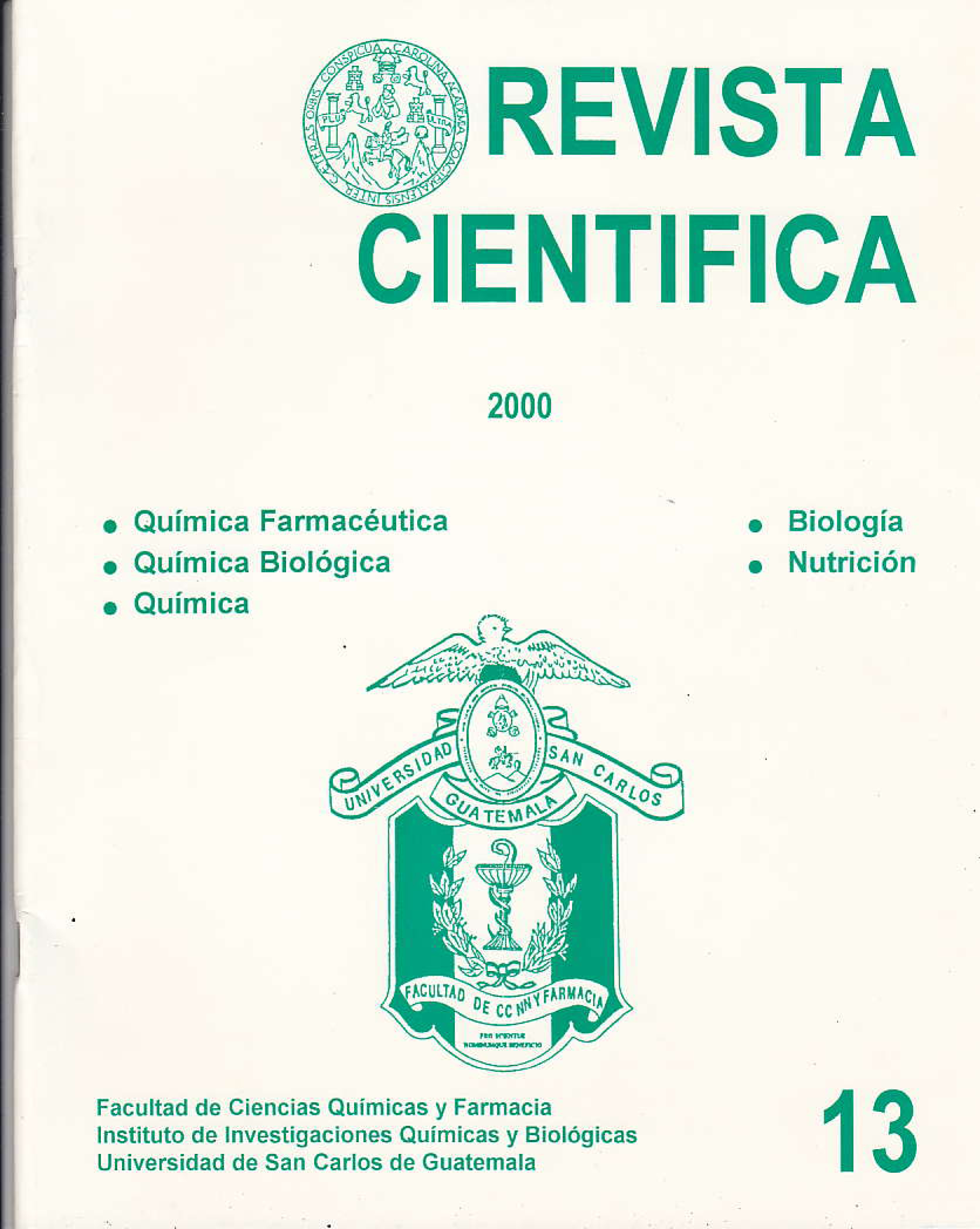Isolation, verification and identification of the active ingredient responsible for the antifungal activity of Bixa orellana (Achiote) leaves.
DOI:
https://doi.org/10.54495/Rev.Cientifica.v13i1.328Keywords:
isolation, verification, identification, active ingredient responsible for the antifungal activity, Bixa orellana (Achiote) leavesAbstract
Four flanovoid-type compounds were isolated from the active antifungal fraction of Bixa orellana leaves. These flavonoids were identified as; Compound 1: Quercetin-3-O-rutinoside Compound 2: Quercetin-3-O-robinobioside Compound 3: lsoramnetin-3-O-rutinoside Compound 4: lsoramnetinO-3-O-robinobioside. The isolation of the compounds present in the leaves of B. orellana was achieved after phytochemical fractionation in an open column with Sephadex LH-20 as a stationary phase and methanol as an eluent, followed by reversed-phase high-performance liquid chromatography (HPLC) in a WATERS p-Bondapak C-18 column and a 50:50 methanol-water mixture as eluent. The structural elucidation of the compounds was carried out by means of 13^C and 1^H Nuclear Magnetic Resonance (NMR) and Fast Atom Bombardment Mass Spectrometry (FABMS); thanks to the support of Dr. Luca Rastrelli from the Faculty of Pharmacy, University of Salerno, Italy. The isolation and identification of the compounds responsible for the antifungal activity of the leaves of B. orellana (general objective of the research) was achieved by obtaining the structures and names of the compounds present in the fraction with positive antifungal activity. Wet chemical tests and analysis by thin layer chromatography (TLC) allowed us to establish the probability that flavonoid-type compounds were present in the active fraction. Analysis by 13C and 1H NMR, Mass Spectrometry and Gas Chromatography confirmed that the compounds present in the active fraction were flavonoids.Downloads
References
Palma L. Contribución al estudio farmacológico de S. orellana (achiote) como hipoglucemiante. Guatemala: Universidad de San Carlos de Guatemala (tesis de graduación. Facultad de Ciencias Químicas y Farmacia), 1981. 31 p.
Morales A. Inhibición in vitro da Trichomonas vaginalis por extractos acuosos vegetales de uso popular. Guatemala: Universidad de San Carlos de Guatemala (tesis de graduación, Facultad de Ciencias Químicas y Farmacia), 1990. 89p.
Girón LF, et al. Estudios de plantas medicinales como antibacterianos. Guatemala: Informe Tramil-ll, 1987. 260p.
Salvador, AL. Confirmación de la actividad antimicrobiana de Bixa orellana y Wioandia urens var caracasana. Guatemala: Universidad de San Carlos de Guatemala (tesis de graduación, Facultad de Ciencias Químicas y Farmacia), 1994. 46p.
Lara S. Contribución al estudio fitoquímico y farmacológico de Bixa orellana (achiote). Guatemala: Universidad de San Garlos de Guatemala (tesis de graduación, Facultad de Ciencias Químicas y Farmacia), 1983. 34p.
Bate-Smith E. Bot. J. Lino. Soc. 1962;58;39, https://doi.org/10.1039/tf9625800350 DOI: https://doi.org/10.1039/tf9625800350
Schneider W., et al. Ocu trence of Tomentos ic Acid in Extracts of Bixa orellana. J. Org. Chem. 1965; 30 (8) ¿2856'2857, https://doi.org/10.1021/jo01019a519 DOI: https://doi.org/10.1021/jo01019a519
Chaco M., et al. Essenclal oils from West African Plant. Isolation of sesquiterpene from Bixa orellana. Perfum. Essent. Oil Rec. 1969;60(6):247-248.
Lawrence B. & Hogg J. Ishwarene in Bixa orellana leaf oil. Phy tochemistry. 1973;12(2):2995, https://doi.org/10.1016/0031-9422(73)80522-9 DOI: https://doi.org/10.1016/0031-9422(73)80522-9
Harbone J. Flavonoid Bisulfates and their Co-occorrences with Ellagic Acid in the Bixaceae frankeniaceae and related Families. Phytochemistry. 1975; 14:1331-1337, https://doi.org/10.1016/S0031-9422(00)98620-5 DOI: https://doi.org/10.1016/S0031-9422(00)98620-5
Downloads
Published
How to Cite
Issue
Section
License
Copyright (c) 2000 Johanna Chew de Campos, Aura Padilla Arreaga

This work is licensed under a Creative Commons Attribution 4.0 International License.
Authors who publish with this journal agree to the following terms:
- Authors retain copyright and grant the journal right of first publication with the work simultaneously licensed under a Creative Commons Attribution License 4.0 that allows others to share the work with an acknowledgement of the work's authorship and initial publication in this journal.
- Authors are able to enter into separate, additional contractual arrangements for the non-exclusive distribution of the journal's published version of the work (e.g., post it to an institutional repository or publish it in a book), with an acknowledgement of its initial publication in this journal.
- Authors are permitted and encouraged to post their work online (e.g., in institutional repositories or on their website) prior to and during the submission process, as it can lead to productive exchanges, as well as earlier and greater citation of published work.









